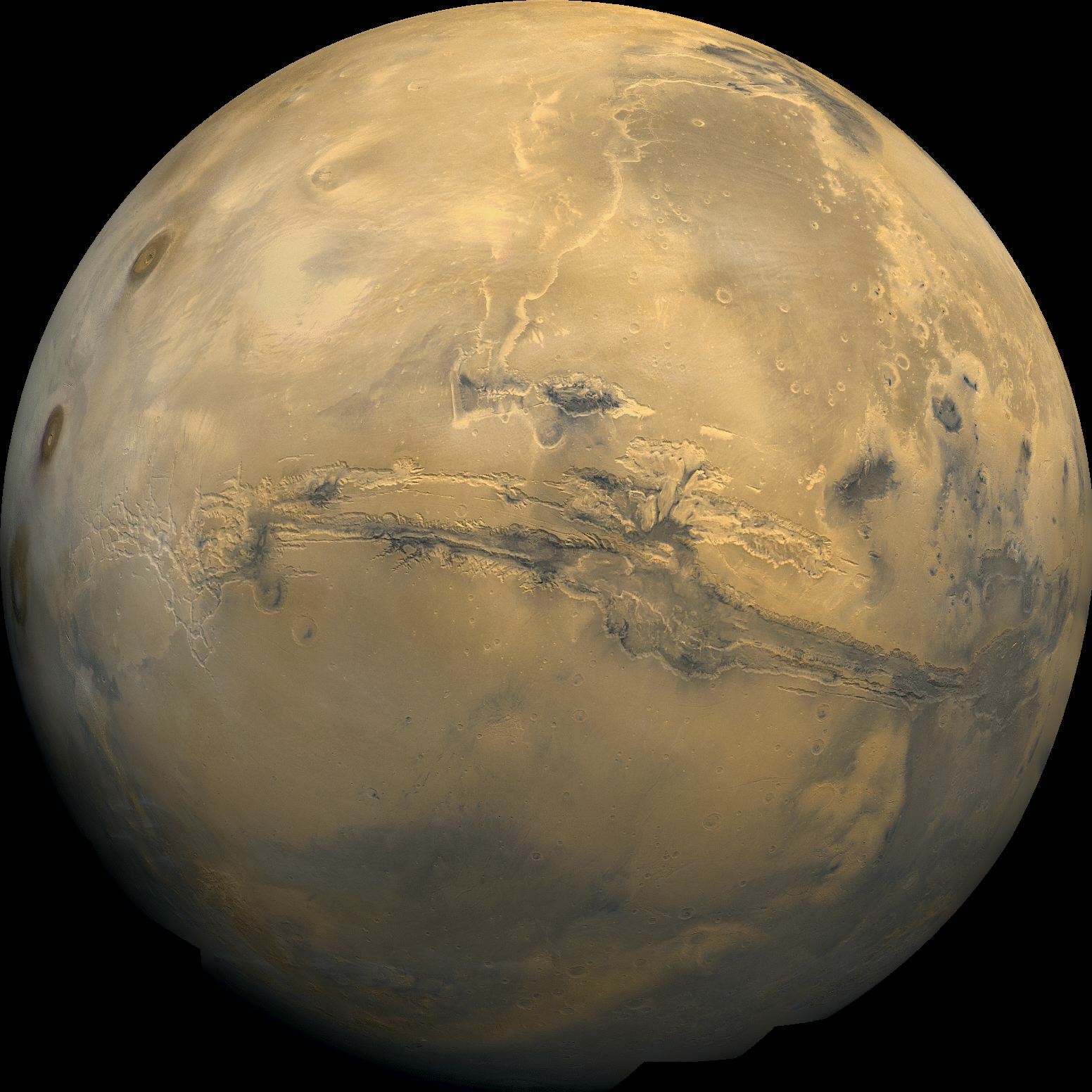This month we have a special edition of our Geosciences column with two pieces on planetary science written by external contributors. The first article, published today, focuses on Martian water while the second, to be published tomorrow, examines the interior structure of the Moon.
If you’d like to contribute to GeoLog, please contact EGU’s Media and Commmunications Officer, Bárbara T. Ferreira at media@egu.eu.
Martian water lasted longer than previously suspected
There is no liquid water on Mars today, but an article published in Geology late last year suggests some areas of the Red Planet may have held water for longer, and more recently, than scientists previously believed. Mineralogical data gathered by the Mars Reconnaissance Orbiter (MRO), from two troughs in the Noctis Labrynthus area of Valles Marineris, show evidence of the continuous presence of water only two billion years ago. Most other traces of Martian water date back to at least three and a half billion years ago, a significant difference even in geologic time.
“It’s twice as young as other places where water used to exist,” said Catherine Weitz, lead author of the paper and a researcher at the Planetary Science Institute in Tucson, Arizona.

Valles Marineris is a system of canyons running along the equator of Mars. (Source: Wikipedia)
Four billion years ago, Mars was a very different place from the arid red planet we know today. Liquid water could have flowed across the surface of the planet and there may even have been rudimentary life. But unlike Earth, Mars could not sustain this kind of environment and began to dry out. Surface water, along with oxygen and other atmospheric elements, evaporated away into space and temperatures dropped. Now, any water left on Mars is either deep underground or frozen in the small polar ice caps. “It didn’t happen all at once,” Weitz said. “It was a slow process, taking place over hundreds of millions of years.”
Although several deep valleys and troughs on Mars show signs of ancient water, only the two discussed in the Geology article show evidence that water lasted there for more than a very brief time. “It’s the observation of the clays over the sulfates that is interesting and unique to this region,” Weitz said. “It means that water was persistent and in a liquid state for months to years.”
Aside from the clay layering, the researchers also found other lines of evidence that water may once have existed in the Noctis Labrynthus. For example, the presence of hydrated minerals, including silicates like sand and opal, as well as other types of clay, suggests water may once have existed there and at other locations on Mars.
Furthermore, the two troughs in question lie close to the Tharsis, a volcanic plateau home to one of the largest volcanoes in the Solar System. This is important because volcanic activity and tectonic plate movements are often associated with mineral hydration, as ground water is pushed up around and through ore and mineral beds by these powerful events. Even when such water ultimately disappears, traces remain embedded in the area’s mineral structure.
Apart from revealing a unique time frame for the presence of water in the two Noctis Labrynthus troughs, the recent study also suggests its neutral pH differed from the likely acidic water suspected of being present on Mars at the same time. This could be determined by examining the unique mineral layering within the troughs. This finding is significant because water at a neutral pH-level would be theoretically more likely to sustain life.
Putting together the ancient geological history of Mars remotely from Earth is not an easy task, yet MRO’s High Resolution Imaging Science Experiment (HiRISE) and Compact Reconnaissance Imaging Spectrometer for Mars (CRISM) provide such high-quality images of the Martian surface that researchers can examine, centimetre by centimetre, the minerals in troughs, measuring their spectra for information on their history. “The troughs are in a pretty rugged area high up,” Weitz said. “We wouldn’t be able to get a lander there.”
The study also used data collected by the Viking Mars mission in the 1970s and 80s to measure the age of the area around the troughs by mapping its geology and counting the number of craters. Relatively few craters present there indicate that the local geology stabilized only very recently.
The next step for Weitz and her colleagues will be to try and find other Martian locations with similar characteristics to the ones observed at Noctis Labrynthus. “We have revised some of what we know about water on Mars,” Weitz said. “Now we want to find out more.”
